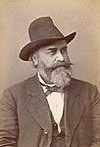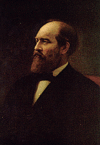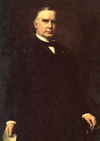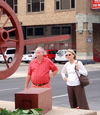 Giving “Lincoln bedroom” a whole new meaning: The New York Times has a story this morning on a new book that says Abraham Lincoln, our gloomiest president, was “gay.” The work, “The Intimate World of Abraham Lincoln” by the now-deceased psychologist and sex researcher C.A. Tripp, focuses on two men with whom Lincoln shared a bed: a four-year bunkmate in Illinois and a bodyguard who hunkered down with the chief executive for a time during the Civil War.
Giving “Lincoln bedroom” a whole new meaning: The New York Times has a story this morning on a new book that says Abraham Lincoln, our gloomiest president, was “gay.” The work, “The Intimate World of Abraham Lincoln” by the now-deceased psychologist and sex researcher C.A. Tripp, focuses on two men with whom Lincoln shared a bed: a four-year bunkmate in Illinois and a bodyguard who hunkered down with the chief executive for a time during the Civil War.
The Times quotes Larry Kramer, the AIDS activist, as saying, “… the most important president in the history of the United States was gay. Now maybe they’ll leave us alone, all those people in the party he founded.” (He’s got to be kidding: This is going to send the anti-gay conservatives into paroxysms of rage about the “home-a-sekshool conspiracy to turn America home-a-sekshool.”) One historian, Jean H. Baker, speculates in the article that Lincoln’s gayness could explain his willingness to break with popular opinion on slavery and issue the Emancipation Proclamation.
It turns out the stories about Lincoln bedding down with dudes are both true and well-worn (examples of past online posts here and here, and the discussion is said to go back to Lincoln’s lifetime; in my own sheltered experience I hadn’t encountered this idea before). But here’s the thing: Even if it’s true that, apart from sleeping under the same covers, he was sexually involved with these guys, isn’t there something false or forced in mapping the modern idea of gayness onto him, as the people reacting to this book are doing? As the Times notes, the word homosexual was coined only in the 1890s; ideas like gay consciousness and queer liberation have emerged much more recently. Just consider the world Lincoln emerged from: Homosexual sex was a criminal offense, and had been for centuries in Britain and America (the Wikipedia notes in its review of the history of sodomy law that the first such statute on the books was Henry VIII’s Buggery Act).
Not that we can’t interpret the past with our own knowledge and understanding of the world today: We really don’t have a choice. So in the case of Thomas Jefferson, we see something odious in the fact he couldn’t bring himself to free his slaves and had a prolonged conjugal relationship with one of them. But that doesn’t make him a member of the Jim Crow movement or the Klan. Likewise with Lincoln: If he did have a thing for guys, it’s a much more complicated matter than simply labeling him the Gay Emancipator to figure out what his homosexuality meant both to him and to history.






